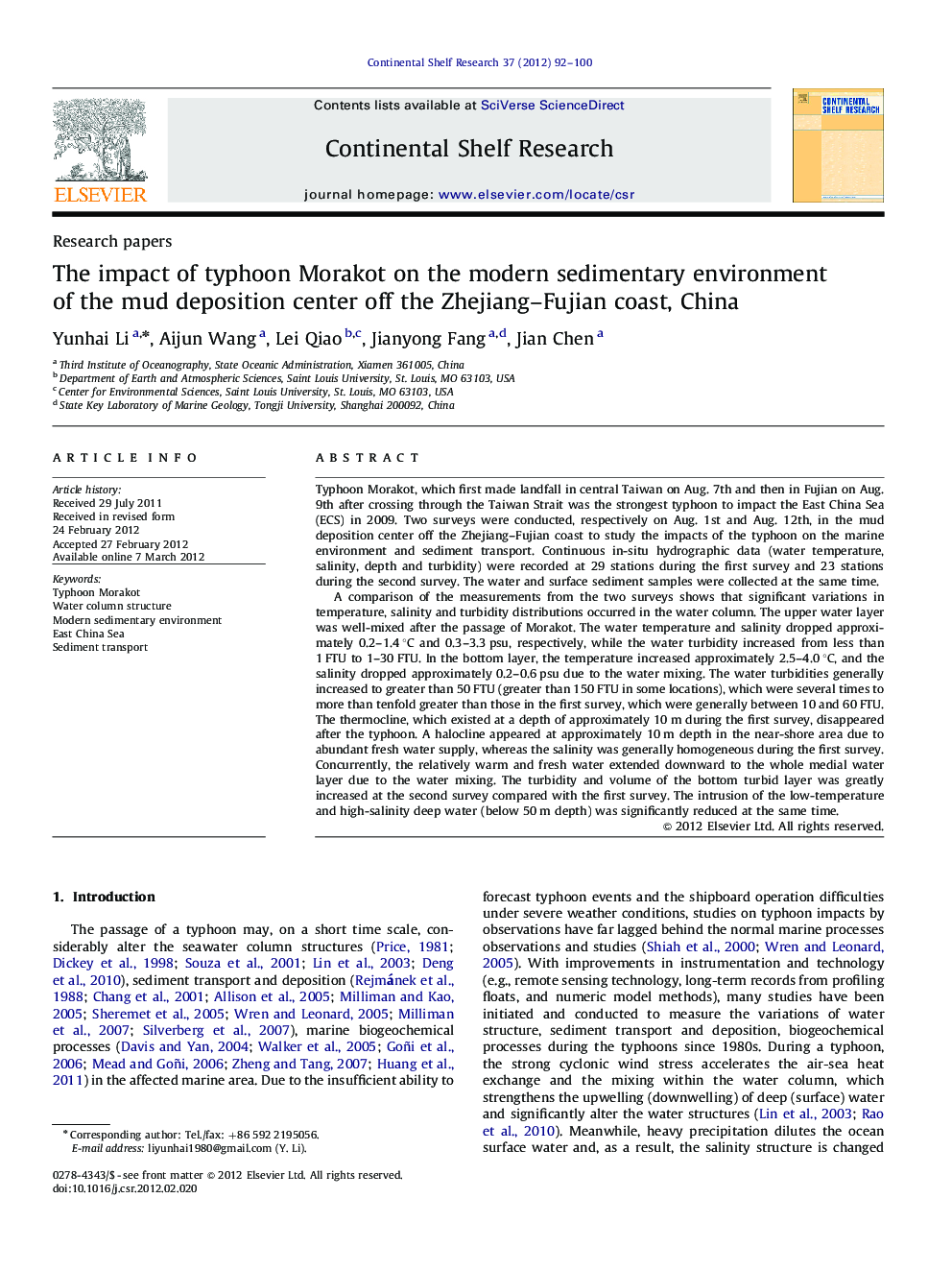| کد مقاله | کد نشریه | سال انتشار | مقاله انگلیسی | نسخه تمام متن |
|---|---|---|---|---|
| 4532462 | 1626172 | 2012 | 9 صفحه PDF | دانلود رایگان |

Typhoon Morakot, which first made landfall in central Taiwan on Aug. 7th and then in Fujian on Aug. 9th after crossing through the Taiwan Strait was the strongest typhoon to impact the East China Sea (ECS) in 2009. Two surveys were conducted, respectively on Aug. 1st and Aug. 12th, in the mud deposition center off the Zhejiang–Fujian coast to study the impacts of the typhoon on the marine environment and sediment transport. Continuous in-situ hydrographic data (water temperature, salinity, depth and turbidity) were recorded at 29 stations during the first survey and 23 stations during the second survey. The water and surface sediment samples were collected at the same time.A comparison of the measurements from the two surveys shows that significant variations in temperature, salinity and turbidity distributions occurred in the water column. The upper water layer was well-mixed after the passage of Morakot. The water temperature and salinity dropped approximately 0.2–1.4 °C and 0.3–3.3 psu, respectively, while the water turbidity increased from less than 1 FTU to 1–30 FTU. In the bottom layer, the temperature increased approximately 2.5–4.0 °C, and the salinity dropped approximately 0.2–0.6 psu due to the water mixing. The water turbidities generally increased to greater than 50 FTU (greater than 150 FTU in some locations), which were several times to more than tenfold greater than those in the first survey, which were generally between 10 and 60 FTU. The thermocline, which existed at a depth of approximately 10 m during the first survey, disappeared after the typhoon. A halocline appeared at approximately 10 m depth in the near-shore area due to abundant fresh water supply, whereas the salinity was generally homogeneous during the first survey. Concurrently, the relatively warm and fresh water extended downward to the whole medial water layer due to the water mixing. The turbidity and volume of the bottom turbid layer was greatly increased at the second survey compared with the first survey. The intrusion of the low-temperature and high-salinity deep water (below 50 m depth) was significantly reduced at the same time.
► Two surveys were conducted before and after typhoon.
► Stratification and thermocline were interrupted due to mixture after typhoon.
► A halocline was produced in surface water for fresh water supply after typhoon.
► Bottom turbid layer's intensity and extension were both magnified after typhoon.
► Typhoon-induced hydrodynamics were responsible for the variations in water column.
Journal: Continental Shelf Research - Volume 37, 1 April 2012, Pages 92–100